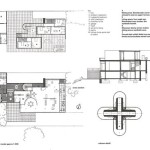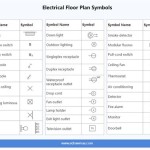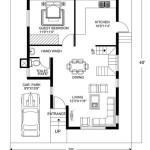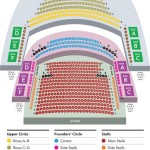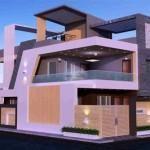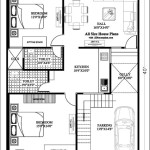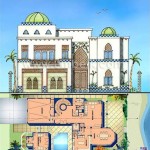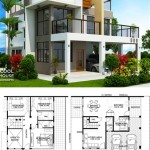Here's an article focusing on Real Log Home Plans, structured to meet your specifications: ## Real Log Home Plans: A Comprehensive Guide
The allure of a log home is deeply rooted in its connection to nature, its rugged aesthetic, and its promise of enduring warmth and comfort. However, realizing this dream requires careful planning, particularly in selecting the right log home plan. A well-chosen plan ensures structural integrity, efficient space utilization, and adherence to building codes, ultimately making the difference between a successful build and a costly, frustrating experience. This article delves into essential aspects of real log home plans, offering guidance for prospective homeowners.
Choosing the right log home plan involves a multi-faceted approach, beginning with understanding the different styles of log construction. There are full log homes, where the walls are constructed entirely of logs, and there are hybrid log homes, which incorporate conventional framing alongside log accents. Each approach has its own structural requirements and aesthetic characteristics, influencing the selection of an appropriate plan.
The cost of building a log home is directly related to the complexity of the plan. Intricate designs with numerous gables, dormers, and angles demand more labor and materials, resulting in a higher overall cost. Simpler, more efficient designs can significantly reduce expenses without sacrificing the essential character of a log home.
Understanding Log Home Styles and Their Plan Implications
The term "log home" encompasses a wide range of styles, each with distinct construction techniques and visual appeal. These styles significantly impact the plan's structure and required modifications. The most common styles include:
Full Log Homes: These homes boast walls constructed entirely of logs. Different methods of interlocking the logs are employed, such as the dovetail notch, saddle notch, and Swedish cope. Plans for full log homes must account for log settling, which occurs as the logs dry and compress over time. This settling can affect window and door placement and requires special slip joints for plumbing and electrical systems.
Timber Frame Homes: While technically not exclusively log homes, timber frame structures often incorporate log elements. The frame is constructed of heavy timbers, connected by mortise and tenon joints. Walls can be infilled with various materials, including log siding or insulated panels. Plans for timber frame homes emphasize the structural integrity of the frame itself and often require specialized engineering.
Hybrid Log Homes: These homes combine log elements with conventional framing. For example, a home might feature log siding over traditionally framed walls or incorporate log posts and beams within a conventional structure. Hybrid plans offer flexibility in design and construction, allowing for a blend of log aesthetics and modern building techniques. The plans must clearly delineate the log elements from the conventionally framed sections.
Chinked Log Homes: This style features logs stacked with significant gaps between them, filled with chinking. The chinking provides insulation and weatherproofing. Plans for chinked log homes need to account for the specific type of chinking used and its impact on the wall's overall thermal performance.
Understanding the unique characteristics of each style is crucial when evaluating log home plans. A plan designed for a full log home will not be suitable for a hybrid log home without significant modifications.
Key Considerations When Choosing a Log Home Plan
Beyond style, several other factors play a critical role in selecting the ideal log home plan. These considerations include the homeowner's lifestyle, the building site's characteristics, and local building codes. Ignoring these aspects can lead to design flaws, construction delays, and unexpected costs.
Lifestyle and Space Requirements: A log home should be designed to accommodate the homeowner's lifestyle. Considerations include the number of bedrooms and bathrooms, the size of the kitchen and living areas, and the need for specialized spaces such as a home office or workshop. The floor plan should facilitate comfortable living and cater to the occupants' specific needs. Accessibility is also important; consider universal design principles if accessibility is an issue.
Site Analysis and Orientation: The building site's topography, orientation, and climate should influence the log home plan. The plan should maximize natural light and ventilation while minimizing exposure to harsh weather conditions. For example, in colder climates, positioning the main living areas on the south side of the house can maximize solar gain. Site-specific challenges, such as steep slopes or unstable soil, may necessitate modifications to the foundation design. The orientation of the logs themselves should be carefully considered to minimize sun exposure and potential for UV damage.
Building Codes and Regulations: Log homes must adhere to local building codes and regulations, which vary depending on the jurisdiction. These codes address structural integrity, fire safety, energy efficiency, and accessibility. It is crucial to ensure that the log home plan complies with all applicable codes before commencing construction. This typically involves consulting with a structural engineer and a local building inspector.
Energy Efficiency: Log homes can be energy efficient, but careful planning is essential. Factors such as log size, insulation, and window placement affect the home's overall energy performance. Plans should incorporate energy-efficient design principles to minimize heating and cooling costs. Consider high-performance windows, proper insulation in the roof and foundation, and passive solar design strategies.
Future Expansion: Consider the possibility of future expansion when selecting a log home plan. Integrating space for additions or modifications into the initial design can simplify future construction projects.
Where to Find Real Log Home Plans
Obtaining log home plans involves several avenues, each offering varying degrees of customization and expertise.
Log Home Manufacturers: Many log home manufacturers offer a selection of pre-designed plans that can be customized to suit individual needs. These plans are often based on the manufacturer's specific log profile and construction methods. Choosing a plan from a manufacturer can streamline the building process, as the manufacturer typically provides all the necessary materials and technical support.
Architects and Designers: Hiring an architect or designer is the most customized approach to obtaining a log home plan. An architect can create a unique design that meets the homeowner's specific requirements and takes into account the building site's characteristics. While this approach is generally more expensive than using a pre-designed plan, it offers the greatest flexibility and control over the final product.
Online Plan Services: Numerous online plan services offer a variety of log home plans at different price points. These plans can be a good starting point for those on a budget, but it is crucial to carefully review the plans and ensure that they meet local building codes. Online plans may require modification by a structural engineer to ensure compliance.
Modifying Existing Plans: Another option is to purchase an existing log home plan and modify it to suit individual needs. This can be a cost-effective approach, but it is important to ensure that the modifications are structurally sound and comply with building codes. Consult a structural engineer to review any modifications.
Before committing to a log home plan, it is prudent to obtain multiple quotes from different sources and carefully compare the features, costs, and level of service offered. Consulting with a local builder experienced in log home construction can provide valuable insights into the suitability of a particular plan for the building site and local climate.
The ultimate goal is to select a log home plan that aligns with aesthetic preferences, lifestyle needs, and budget constraints, while also ensuring structural integrity and compliance with building codes. A well-chosen plan is the foundation for a successful log home build, providing years of enjoyment and lasting value.
Carefully scrutinize the plans themselves. Look for detailed construction drawings, including foundation plans, floor plans, elevation views, and section details. The plans should specify the type and size of logs to be used, as well as the methods for connecting the logs. Pay close attention to the details of window and door framing, as well as the design of the roof system. If the plans are incomplete or unclear, it is essential to obtain clarification from the plan provider before proceeding.
Finally, remember that building a log home is a significant undertaking. By carefully considering all aspects of log home plans, prospective homeowners can increase the likelihood of a successful and rewarding building experience.

Log House Plans Google Search Home Cabin Homes

Lodge Log And Timber Floor Plans For Homes Lodges Cabins Bear Lake

The Brewster Log Home Floor Plans Nh Custom Homes Gooch Real

Browse Floor Plans For Our Custom Log Cabin Homes House Home

The Woodland A Real Log Homes Three Bedroom Floor Plan

The Piedmont Log Home Floor Plans Nh Custom Homes Gooch Real

Ping For Log Home Plans Real Homes

30 Beautiful Log Home Plans With Country Charm And Gorgeous Layouts

Browse Floor Plans For Our Custom Log Cabin Homes House Small Blueprints

Traditional Real Log Style With The Ashley Floor Plan Homes

